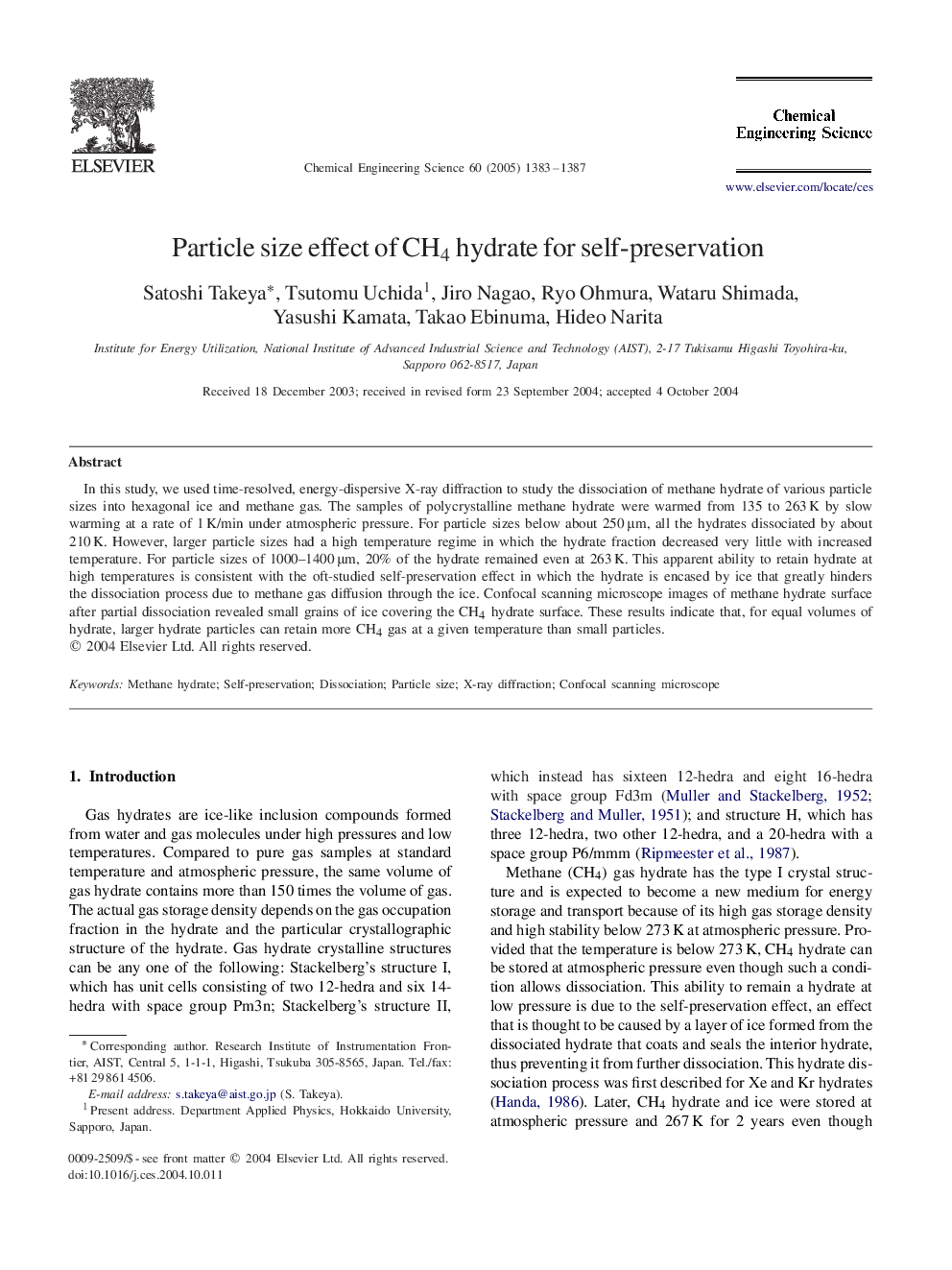| Article ID | Journal | Published Year | Pages | File Type |
|---|---|---|---|---|
| 10262724 | Chemical Engineering Science | 2005 | 5 Pages |
Abstract
In this study, we used time-resolved, energy-dispersive X-ray diffraction to study the dissociation of methane hydrate of various particle sizes into hexagonal ice and methane gas. The samples of polycrystalline methane hydrate were warmed from 135 to 263 K by slow warming at a rate of 1 K/min under atmospheric pressure. For particle sizes below about 250μm, all the hydrates dissociated by about 210 K. However, larger particle sizes had a high temperature regime in which the hydrate fraction decreased very little with increased temperature. For particle sizes of 1000-1400μm, 20% of the hydrate remained even at 263 K. This apparent ability to retain hydrate at high temperatures is consistent with the oft-studied self-preservation effect in which the hydrate is encased by ice that greatly hinders the dissociation process due to methane gas diffusion through the ice. Confocal scanning microscope images of methane hydrate surface after partial dissociation revealed small grains of ice covering the CH4 hydrate surface. These results indicate that, for equal volumes of hydrate, larger hydrate particles can retain more CH4 gas at a given temperature than small particles.
Related Topics
Physical Sciences and Engineering
Chemical Engineering
Chemical Engineering (General)
Authors
Satoshi Takeya, Tsutomu Uchida, Jiro Nagao, Ryo Ohmura, Wataru Shimada, Yasushi Kamata, Takao Ebinuma, Hideo Narita,
